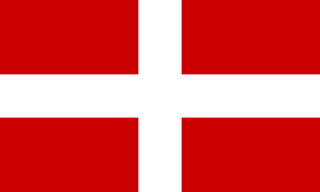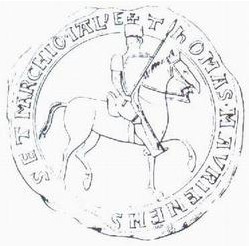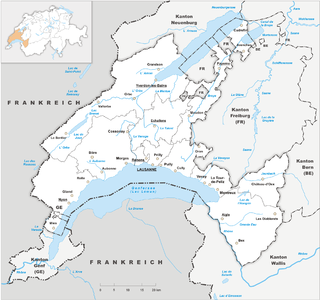Related Research Articles

Savoy is a cultural-historical region in the Western Alps. Situated on the cultural boundary between Occitania and Piedmont, the area extends from Lake Geneva in the north to the Dauphiné in the south and west and to the Aosta Valley in the east.

Thomas Ι was Count of Savoy from 1189 to 1233. He is sometimes numbered "Thomas I" to distinguish him from his son of the same name. His long reign marked a decisive period in the history of Savoy.

Amadeus V, also known as Amadeus the Great, was the Count of Savoy from 1285 until his death in 1323. He was a significant medieval ruler who played a crucial role in the expansion and consolidation of the House of Savoy’s influence in the regions that are now part of modern-day France, Italy, and Switzerland.

Valais, more formally, the Canton of Valais, is one of the 26 cantons forming the Swiss Confederation. It is composed of thirteen districts and its capital and largest city is Sion.

Vaud, more formally the Canton of Vaud, is one of the 26 cantons forming the Swiss Confederation. It is composed of ten districts; its capital city is Lausanne. Its coat of arms bears the motto "Liberté et patrie" on a white-green bicolour.

Aigle is a historic town and a municipality and the capital of the district of Aigle in the canton of Vaud in Switzerland.

Bex is a municipality in the canton of Vaud, Switzerland, located in the district of Aigle. It is a few kilometers south of its sister town municipality of Aigle.

The County of Savoy was a feudal state of the Holy Roman Empire which emerged, along with the free communes of Switzerland, from the collapse of the Burgundian Kingdom in the 11th century. It was the cradle of the future Savoyard state.

Thonon-les-Bains, often simply referred to as Thonon, is a subprefecture of the Haute-Savoie department in the Auvergne-Rhône-Alpes region in Eastern France. In 2018, the commune had a population of 35,241. Thonon-les-Bains is part of a transborder metropolitan area known as Grand Genève. It is situated on the shores of Lake Geneva.

Chillon Castle is an island medieval castle located on Lake Geneva, south of Veytaux in the canton of Vaud. It is situated at the eastern end of the lake, on the narrow shore between Montreux and Villeneuve, which gives access to the Alpine valley of the Rhône. Chillon is amongst the most visited medieval castles in Switzerland and Europe. Successively occupied by the House of Savoy, then by the Bernese from 1536 until 1798, it now belongs to the canton de Vaud and is classified as a Swiss Cultural Property of National Significance.

The Transports Publics du Chablais (TPC) is a transportation company that operates various rail and bus services in the Chablais region, at the eastern end of Lake Geneva. It was formed in 1999 from the merger of four companies.

Jacques of Savoy, Count of Romont was a member of the House of Savoy and military commander during the Burgundian Wars.

The Aigle–Leysin railway line is a narrow-gauge railway line in the Chablais area of southwest Switzerland. The line was opened on 5 May 1900, a 1,000 mm -gauge cog-wheel railway using the Abt rack system. It was the first such line in the region. The line was built by the Chemin de fer Aigle–Leysin.

Italian irredentism in Savoy was the political movement among Savoyards promoting annexation to the Savoy dynasty's Kingdom of Italy. It was active from 1860 to World War II.

Amadeus III was the Count of Geneva from 1320 until his death. He ruled the Genevois, but not the city of Geneva proper, and it was during his time that the term "Genevois" came to be used as it is today. He was the eldest son and successor of William III and Agnes, daughter of Amadeus V of Savoy. He played a major rôle in the politics of the House of Savoy, serving consecutively as regent and president of the council, and also sitting on the feudal tribunal—one of three tribunals of the Audiences générales—of the Duchy of Aosta.

The Barony of Vaud was an appanage of the County of Savoy, corresponding roughly to the modern Canton of Vaud in Switzerland. It was created by a process of acquisition on the part of a younger brother of the reigning count beginning in 1234 and culminated in the formalisation of its relationship to the county in 1286. It was semi-independent state, capable of entering into relations with its sovereign, the Holy Roman Emperor, and of fighting alongside the French in the Hundred Years' War. It ceased to exist when it was bought by the count in 1359. It was then integrated into the Savoyard state, where the title Baron of Vaud remained a subsidiary title of the heads of the family at least as late as the reign of Charles Albert of Sardinia, although the territory of the barony was annexed by the Canton of Bern during the Protestant Reformation (1536).

Louis II, son of Louis I of Vaud of the House of Savoy, was the Baron of Vaud from 1302 until his death. A military man, he fought widely in Italy and, during the first phase of the Hundred Years' War, in France. As a diplomat he visited England and the papal court in Rome and Avignon, and he served as regent of the County of Savoy between 1343 and his death, during which period he was the leader of the House of Savoy.

Louis I was the Baron of Vaud. At the time of his birth he was a younger son of the House of Savoy, but through a series of deaths and his own effective military service, he succeeded in creating a semi-independent principality in the pays de Vaud by 1286. He travelled widely in the highest circles of European nobility, obtained the right to mint coins from the Holy Roman Emperor, and convoked the first public assembly in the Piedmont to include members of the non-noble classes. When he died, his barony was inherited by his son.

The Pharmacy of the Eastern Vaud Hospitals is an inter-hospital pharmacy constituted as a nonprofit organization on 1 January 1984 by seven regional hospitals in the eastern part of the canton of Vaud, and considered of public interest. It was the second of its kind in Switzerland.
The Neutralized Zone of Savoy was a zone of neutrality to the north of the Duchy of Savoy, part of the States of Savoy or the Kingdom of Sardinia. It was set up under the treaties that followed the two abdications of the French Emperor Napoleon I in 1815. Savoy became French in 1860, and the zone was abolished in 1919.